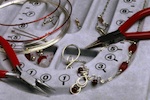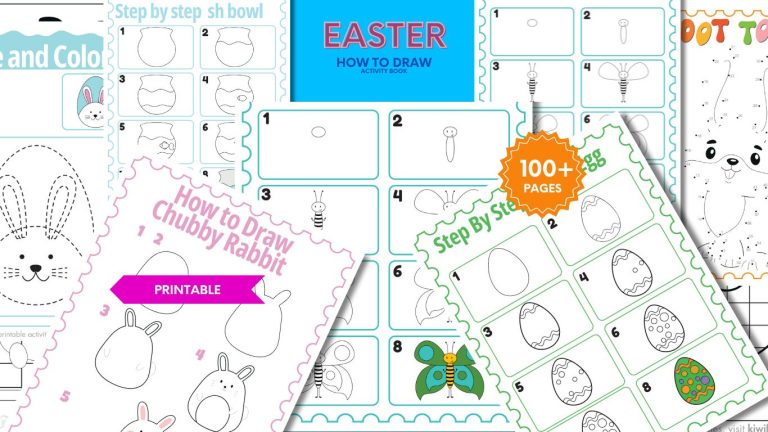Making your own jewellery? Are you unsure about how to start making your own jewelry? When you first start making jewellery you will hear all sorts of terms and jargon, and while some of it is self explanatory, many of the terms will sound like a foreign language. Read the glossary below to explain the most common jewellery making terms, so you will be able to make sense of any jewellery making project.
Bead Board
A bead board is a plastic moulded board covered in flock, and it is used to lay out jewellery while it is in the making process. There are individual compartments which allow the maker to set out all the necessary beads and findings, and there are measurements around the edge so that beads can be equally spaced as you go.
Bead Cap
A bead cap is a metal finding which is used to cover the top and/or bottom of a bead.
Bead Mat
A bead mat is a soft, felt like mat which stops your beads from rolling about while you are jewellery making.
Bugle Beads
Bugle beads are long skinny beads, usually no more than 2mm wide and up to about 7mm long.
Clasp
A clasp is a finding (see below) which enables the wearer to put on and take off their jewellery easily. There are many types of clasps including lobster clasps, magnetic clasps, toggle clasps and barrel locks. Which clasp you use depends on personal preference, as they all essentially do the same job.
Craft Wire
Craft wire is a bendable wire which comes in varying thicknesses and colours, and is used for making jewellery where the wire needs to hold a specific shape. The thickness of the wire is referred to in gauges, and the higher the gauge, the thinner the wire. 28 gauge wire is commonly used for knitting or crocheting jewellery.
Crimp or Crimp Bead
A crimp bead is a tiny bead made out of soft metal, which is used to hold other beads and findings in place. To ‘crimp’, means to squash a crimp bead in place using a pair of pliers.
There are other types of crimps called Charlotte Crimps or Clam Crimps which look like a clam shell with a loop at the top. These are used to crimp cord or several strands of wire together, and attach it to a clasp.
Crimping Pliers
Crimping pliers are pliers used to squash crimps in place. In the absence of crimping pliers, long nosed or flat nosed pliers can also be used.
End Bar
This bar is a type of clasp which is used for multi strand necklaces or bracelets. It is simply a decorative bar, with several loops which wires can be attached to. The two bars (one on each end of the necklace) clasp together.
Eye Pin
An eye pin is a finding (see below) which looks like a long pin, with a loop at one end.
Findings
Findings is a general term which is used to describe all the bits and pieces used to actually construct a piece of jewellery. Things like clasps, rings and pins are all referred to as findings.
Long Nosed Pliers
Long nosed pliers are, as the name suggest, pliers with a long nose. They are most commonly used for holding things in place, and in the absence of crimping pliers are also used for crimping.
Floating
Floating is the term used to describe a style of jewellery where the beads appear to be floating on the wire. The beads are actually held in place using crimp beads or jewellery glue.
Head Pin
A head pin is a finding (see above) which looks like an everyday pin, but it is made out of heavier metal.
ID and OD
Many jewellery making instructions will refer to an ID or OD. ID stands for ‘inside diameter’, and you guessed it, OD stands for ‘outside diameter’.
Jig
A jig is a pattern board where you can place pins at desired points, and then wind wire around the pins to form specific shapes and patterns.
Jump Ring
A jump ring is a finding which as the name suggests, is simply a metal ring. The opening is not soldered shut, so it can be used to attach components together.
Memory Wire
Memory wire is wire that has been hardened into circles to use either as necklaces or bracelets. You are able to pull the wire out to thread on beads, but then it simply springs back into shape. Memory wire is bought in coils, which can be cut using wire cutters.
Rondelle
Rondelle refers to the shape and style of a bead. Rondelle beads are shaped like life saver lollies.
Round Nosed Pliers
Round nosed pliers are, as the name suggests, pliers with a round nose. They are used for making loops in wire and findings.
Seed Beads
Seed beads are tiny beads which as the name suggests, look like tiny seeds.
Spacer
A spacer is a type of bead (usually metal) which is used to simply put spaces between the beads in your project. They are in themselves decorative, but they are not designed to be the feature of your jewellery project.
Split Ring
A split ring is a finding that looks like the ring you find on traditional styled keyrings.
Tiger Tail Wire
Tiger Tail is the most common form of wire for threading and making basic jewellery projects. It is made up with several strands of very fine wire which is twisted together, and then coated in nylon or plastic. It is similar to fishing wire to look at, but comes in several colours.
Wire Knitting and Crocheting
Quite simply, wire knitting and crocheting is just like ordinary knitting and crocheting, only it is done with craft wire.





